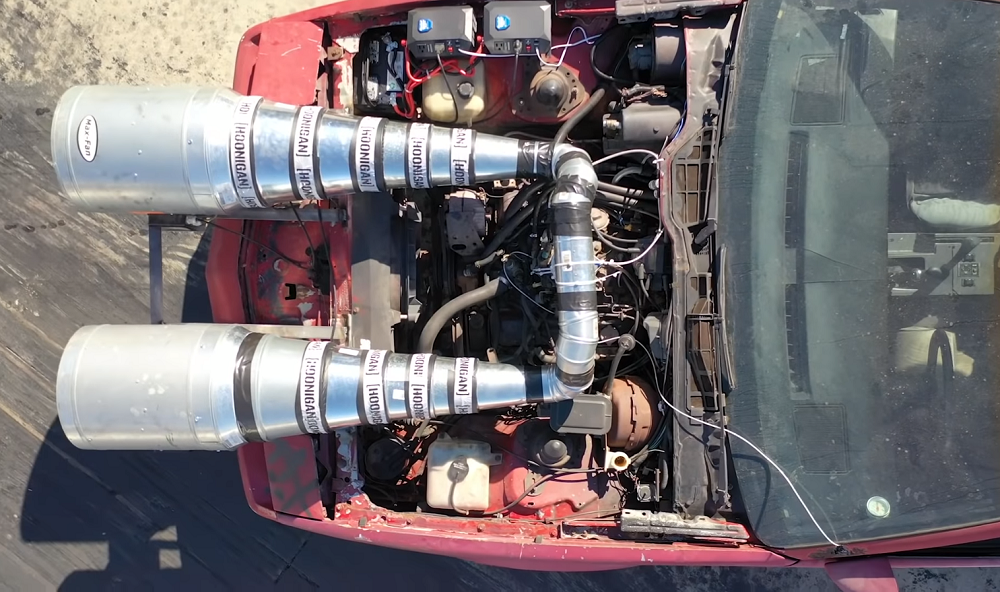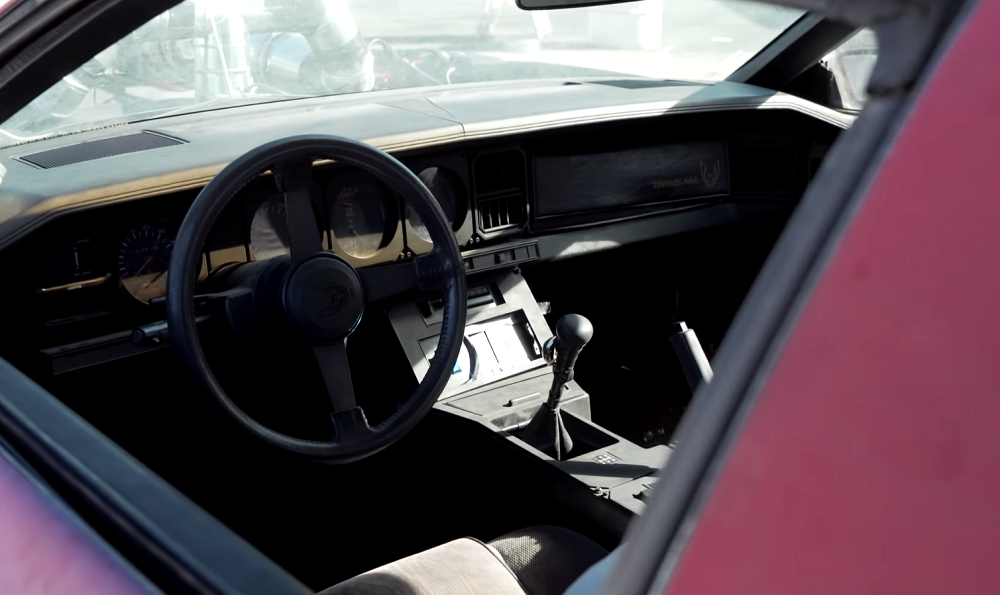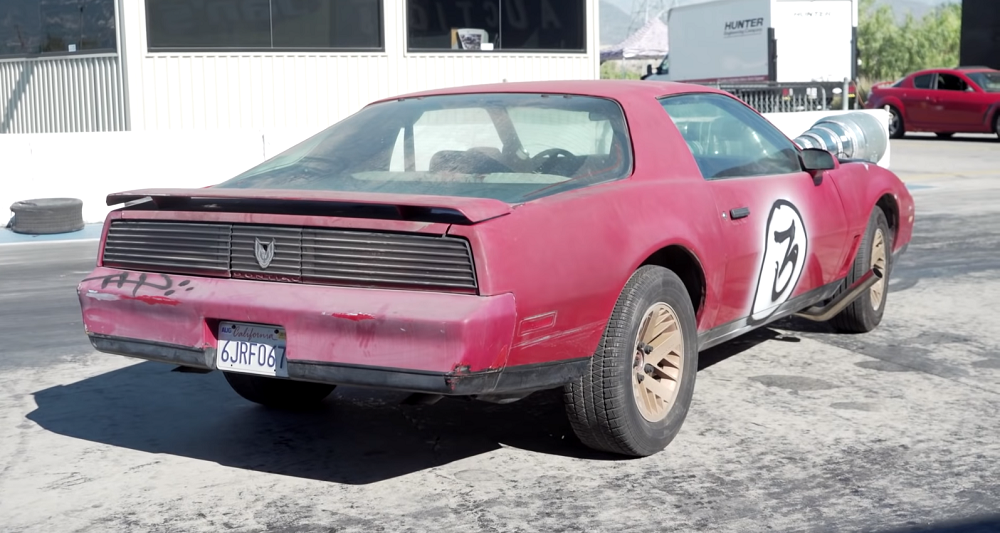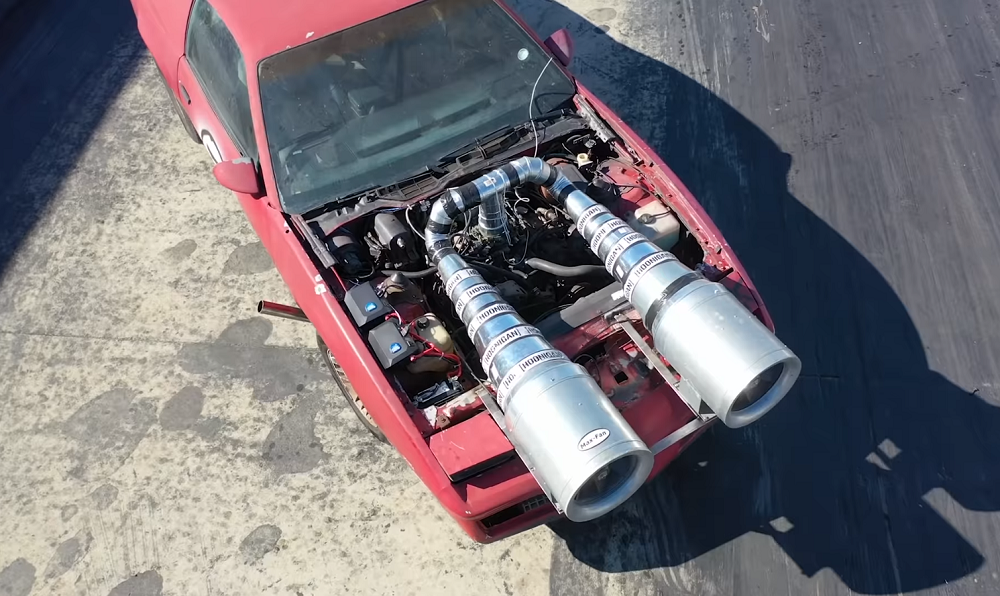Beat-Up Pontiac Firebird Gets Huge Homemade Twin Turbos
Can a crudely assembled forced-induction setup make this Firebird any faster down the eighth mile without destroying what’s left of it?
In automotive tuning, the traditional logic is that if you provide an engine more air and fuel, it’ll produce more power. That additional power will make it faster. One way of stuffing more air into an engine is to use a pair of turbochargers. But what if those turbos are made out of parts from a hardware store and attached to a jalopy of a Pontiac Firebird? That’s what The Hoonigans decide to find out for themselves in this video.
Their concept is relatively simple so there’s no point in dumping a bunch of money into it. In the words of Scumbag Labs’ resident mad scientist Brad (aka Dragstrip Daddy), their test vehicle is “the finest 1984 Pontiac Firebird that you could possibly buy for $700″ that’s been ravaged by years of harsh sun and rust. Instead of buying a tried and true twin-turbo setup from an established company, Brad assembled one “that can be built and bought from Home Depot,” according to his fellow automotive enthusiast Hertrech Eugene Jr. (aka Hert). Two giant fans hang over the front clip and send air down a pair of increasingly smaller pipes that converge at a T joint. That sends the air through a naked metal tube into the carburetor.

Brad says, “We had to use a little … solenoid action to add fuel.” The solenoids are connected to a couple of inverters, which are wired to a switch in the cockpit that’s surrounded by a piece of cardboard covered in electrical tape. Technically, the Firebird has twin turbos, but the Scumbag Labs crew uses a more fitting name, calling them “twin turdos.”
To find out if the pseudo turbos actually add power and improve the Firebird’s drag strip times at the Irwindale Speedway, the gang has to test the car in its base tune. They hook it up to a dyno, then take turns guessing how much horsepower it’ll send to its rear wheels and how fast it’ll go in the eighth mile. Their power estimates range from 69 to 112 RWHP; their times go from a low of 13 seconds to a high of 16.

Jon Chase jumps behind the wheel to see whose guess comes closest to reality. At full spin, the Firebird produces a measly 72 horsepower at the wheels. On the strip, it leisurely chugs its way to a time of 17.37 seconds.

The twin-turdo setup may be hard to look at, but all that matters is if it works. The gang estimates it’ll increase RWHP to as much as 113 and shave the eight-mile run down to a time as low as 12 seconds. Those figures turn out to be a little too optimistic, although the turdos do make the Firebird more powerful and faster. With the turdos engaged, the POS Pontiac delivers 101 RWHP. It gets to the end of the eight mile in only 13.75 seconds.

Unfortunately, the rest of the Firebird can’t handle its new output. Its brakes, including its emergency brake, are shot. Chase has to fly one side of the Firebird into a wall to slow it down. Then the engine catches fire. The Hoonigans don’t seem phased, though. Their DIY forced-induction system worked. Plus, we’re guessing they’ll probably find a way to duct-tape the fuel line to keep it from leaking again.
